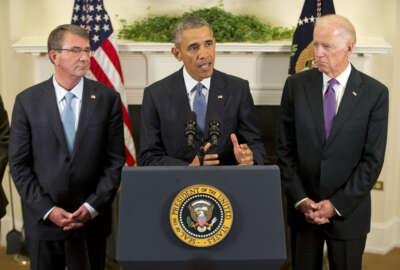 Exclusive
Exclusive The morning after: now what?
For a lot of feds this is Day Two of a 4-day Thanksgiving break. A good time to make pre-New Year’s resolutions, resolve to get back on that diet and exercise...
For a lot of feds this is Day Two of a 4-day Thanksgiving break. A good time to make pre-New Year’s resolutions, resolve to get back on that diet (starting Monday for sure) and exercise regime (starting sometime soon). And to pick your 2016 health plan.
The Open Season deadline is Dec. 14. That’s a Monday so don’t risk problems by waiting until the very last minute.
If you’ve been checking our home page you will have seen lots of tips from experts about how to pick your health plan. Because of premium hikes, network changes and changes in your health/family situation, many experts say that at least 30 percent of the people in the FEHBP program should change plans every year. In fact only about 5 or 6 percent do. That means a lot of people are in plans that either don’t meet their needs or the premiums are too high for what they get in return.
Since Open Season began we had how-to-shop columns here, based on the expert opinions of Walton Francis, editor of Checkbook Guide to Health Plans for Federal Employees, and David Snell, director of retirement benefits at the National Active and Retired Federal Employees. They’ve both been on our Your Turn radio show.
Snell talked about the pros and cons of retirees getting Medicare Part B. Every case is different. You should hear what he said.
Francis discussed best buys, why some people should explore HMOs rather than fee-for-service plans, and why just about everybody should consider an HD (high deductible) plan. He said they offer some of the best premium deals around and also a totally tax-free savings account (that is yours) which he described as “a Roth IRA on steroids.”
Can you afford not to check it out? Short answer: no. You could save as much as $2,000 next year if you pick the best plan for you.
Nearly Useless Factoid
By Meredith Somers
Like other mammals, female platypuses produce milk for their young, however, they do not have nipples. Milk secretes from mammary gland ducts, collects in the grooves of their skin, and the nursing babies lick it up from the tufts of their mother’s fur.
Source: American Museum of Natural History
Want Nearly Useless Factoids in your social media? Follow us on Twitter (@NUFonWFED).
Copyright © 2025 Federal News Network. All rights reserved. This website is not intended for users located within the European Economic Area.
Mike Causey is senior correspondent for Federal News Network and writes his daily Federal Report column on federal employees’ pay, benefits and retirement.
Follow @mcauseyWFED





